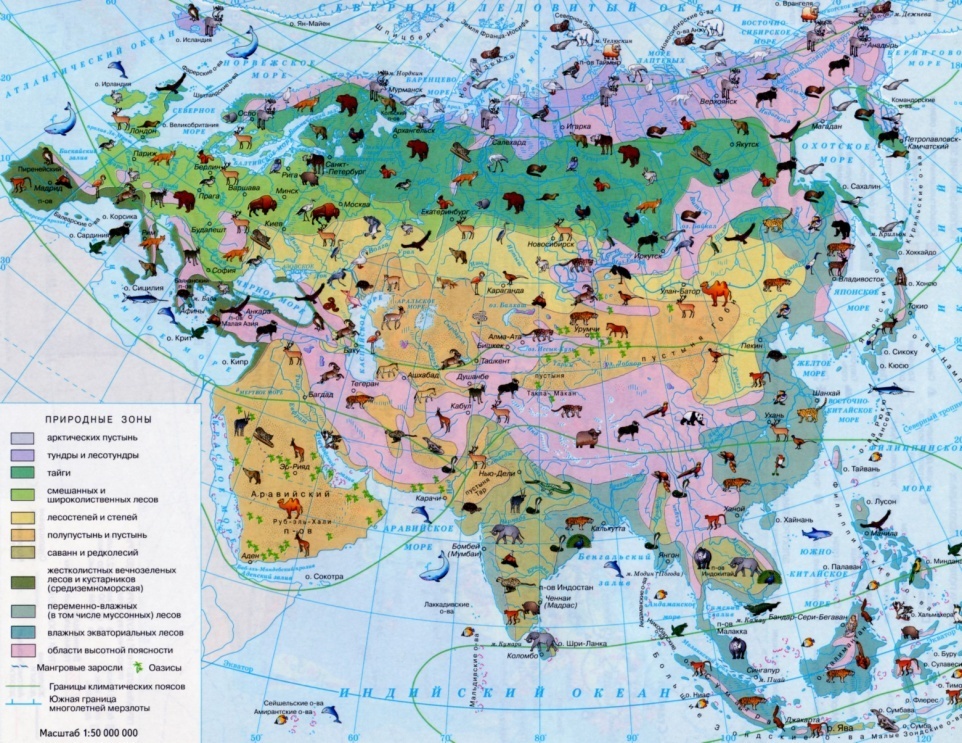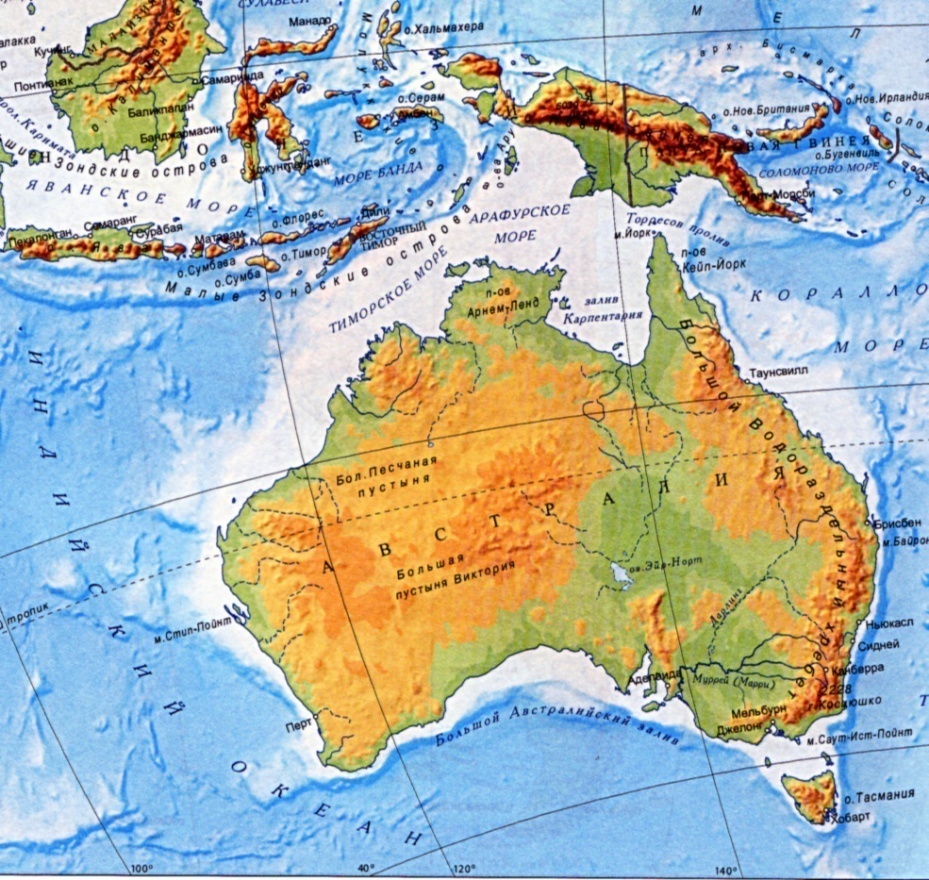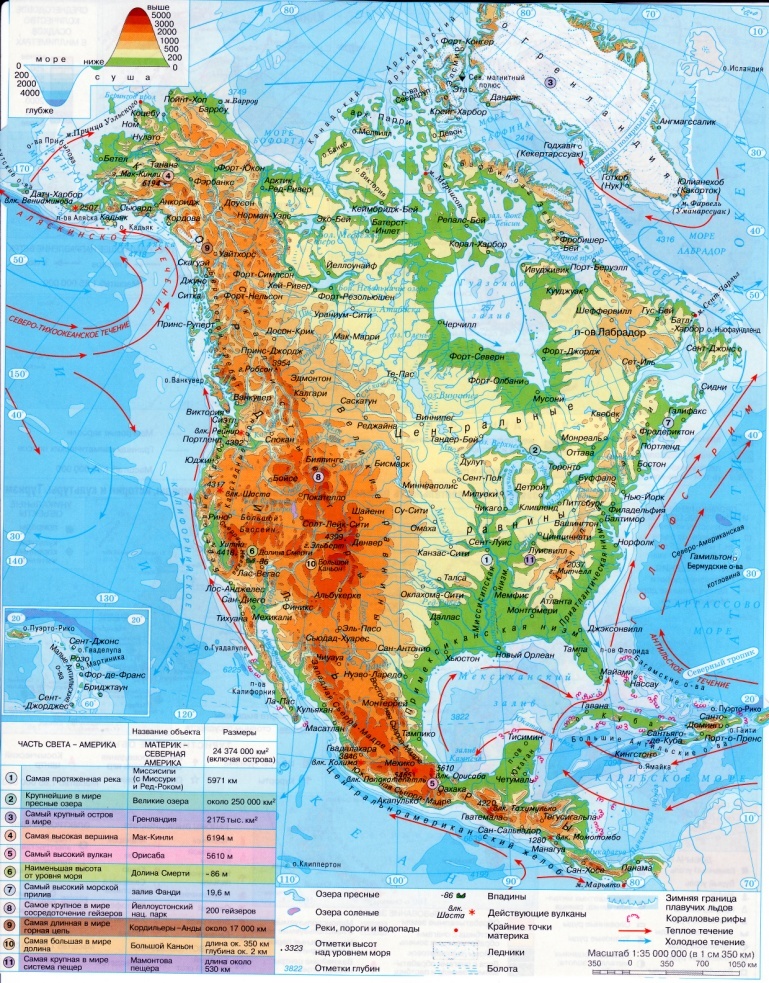Geographical Position of the Arctic Ocean. Discovery.
The Arctic Ocean is situated in the centre of the arctic, around the North Pole. It washes Eurasia and North America. It is connected with the Pacific and the Atlantic oceans by straits. The coastlines of the ocean are broken.There are many islands: Greenland, Canadian Arctic Archipelago, Spitsbergen, Novayya Zemlya, Severnaya Zemlya, Zemlya Frantsa Iosifa, Ostrova Novo Sibirskie. There are many seas near the continents: the Norwegian sea, Barents sea, Kara sea, Laptev sea, East Siberian sea, etc. It is very difficult to explore the Arctic Ocean, because of severe weather. Its discovery needed heroism from the traveler and scientists of many countries. Russian sailors went to Spitsbergen in the 16th century. In the 17th century the participants of the great northern expedition made a map of the Arctic shores and discovered many islands. At the end of the 19th century the Russian-Swedish expedition crossed the Arctic Ocean from the west to the east. In 1937 new methods of Arctic exploration were put to live. The first polar drifting station “North Pole 1” was set on one of the ice-floes. The expedition under the direction of Papanin drifted on the ice-floe from the North Pole to the Greenland sea. The Arctic Ocean is the shallowest. The deepest place is 5449m.The relief of the bottom is complex. The Arctic Ocean is situated in the arctic climatic belt. The arctic air masses are predominant in this region. The average winter t*-20*-40*C, summer t* is 0*C. The lowest t* is -50*C. Warm water currents from the Atlantic and the Pacific oceans influence on the climate. The arctic air masses blow to the north of Eurasia and North America. Strong north Atlantic current penetrated into the arctic. There is a current which crosses the Arctic Ocean from the Bering Strait to Greenland along the coasts of Eurasia. The arctic Ocean is covered with ice. The formation of the ice is connected with low t*and low saltiness of the water. The vegetation and animal life differ greatly in the centre and near the coastline. There is a lot of plankton, fish, walruses, seals. The Arctic Ocean is rich in gas, oil, tin.
|









